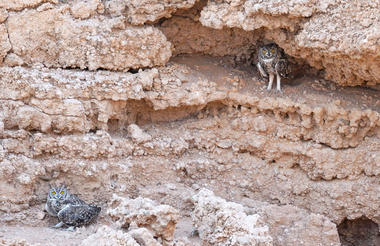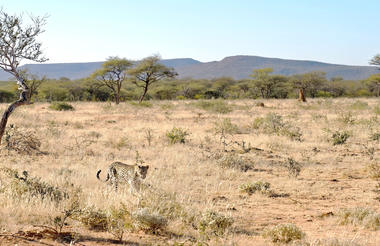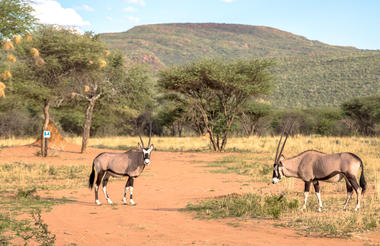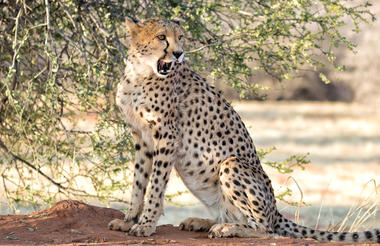The Fish River Canyon is the most impressive natural wonder in southern Namibia. The canyon starts near Seeheim in the lower reaches of the Fish River and ends 160 km further south at Ai-Ais. It is an awe-inspiring gorge that meanders through the fissured Koubis massif at a depth of up to 550 metres. The Fish River Canyon is the second largest canyon in the world.
The canyon started to form about 500 million years ago during a pluvial episode – i.e. a period of intense rainfall. The huge gorge was not only created by water erosion, however, but also by the collapse of the valley bottom due to tectonic movement and by glaciation during the Karoo Ice Age.
The Fish River Canyon is part of the Ai-Ais/Richtersveld Transfrontier Park. The entrance gate is at the Hobas Campsite, from where it is 10 kilometres to the canyon and the most stunning view of the famous Hell's Bend.
The 86 km Fish River Canyon hike is very popular. But it is a tough challenge of 4-6 days and aspiring hikers have to prove their physical fitness with a medical certificate when they apply for a permit from Namibia Wildlife Resorts in Windhoek. Due to soaring temperatures during the summer months, the trail is open only from May to September.
Much easier, but no less scenically beautiful hikes are offered in the adjacent private nature reserves Canyon Nature Park and Gondwana Canyon Park, which also have excellent accommodation.



Sesriem Canyon is a captivating natural wonder located in the heart of the Namib Desert in Namibia. A deep chasm carved through the rocks over millions of years by the Tsauchab River, this narrow gorge is a testament to the power of erosion. It is a striking natural feature of the area that is best explored on foot. Stony walls rise up sharply on both sides of the canyon, while birds roost in its crags and lizards dart along the ledges.
The name Sesriem comes from the Afrikaans and Dutch words for six leather straps (‘ses riem – six thongs), which early pioneers used tied together to draw water from the deep pools within the canyon. Sesriem Canyon is not only a geological marvel but also a haven for unique desert flora and fauna, making it a popular stop for tourists exploring the surreal landscapes of the Namib Desert.



Halfway between Windhoek and Etosha National Park lies Okonjima Nature Reserve. Okonjima is home to AfriCat, a 22,000 ha sanctuary which gives captive big cats a second chance to be released back into the wild and become completely independent hunters in a protected area right in the middle of commercial cattle farmland. Excellent accommodation options are available, from luxury villas to secluded camping sites.
Activities: Guided big cat tracking safaris; leopard-spotting; off-road night drives; hiking the Bushman Trail to learn about San culture.





